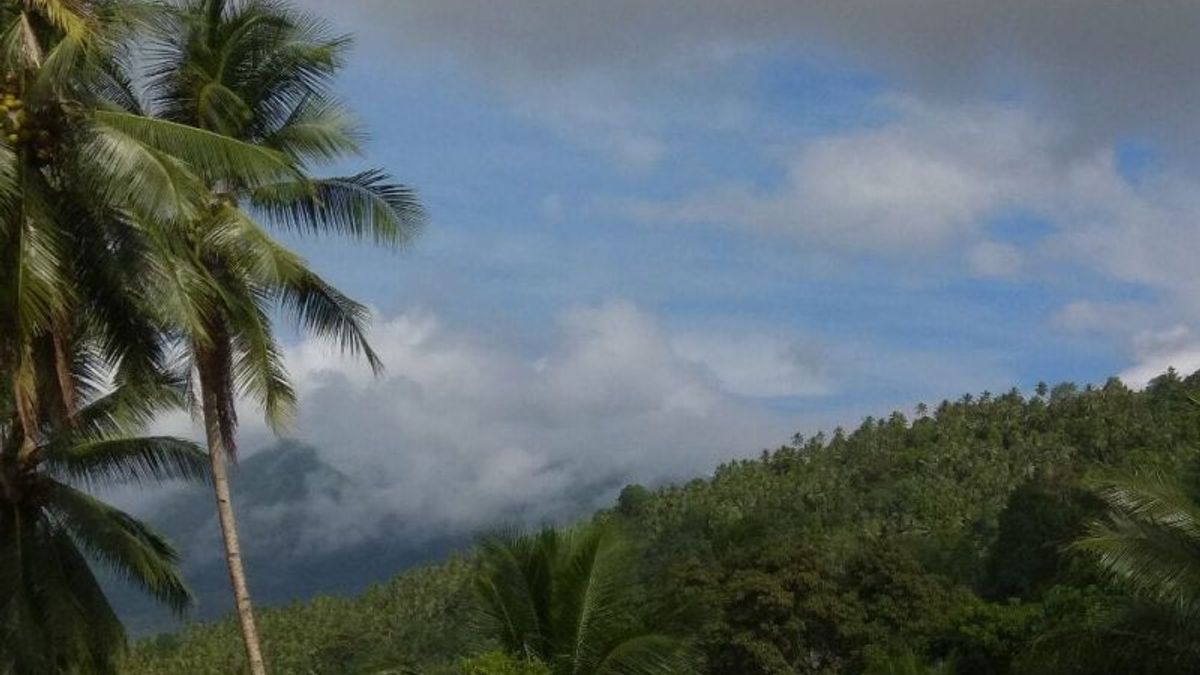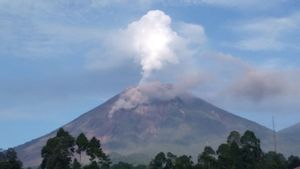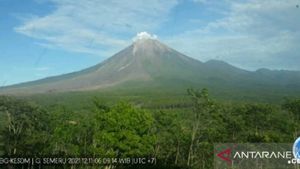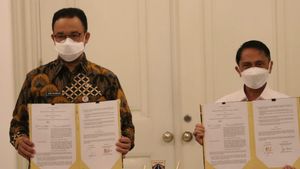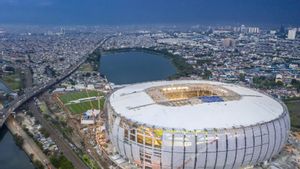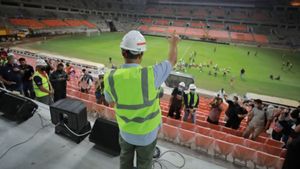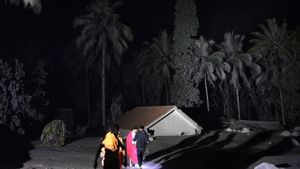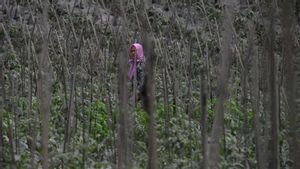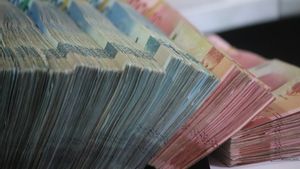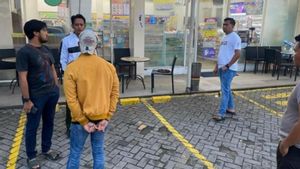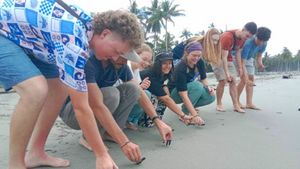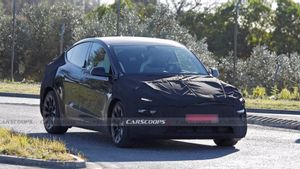SULUT - The Geological Agency of the Ministry of Energy and Mineral Resources (ESDM) has raised the status of Mount Awu in North Sulawesi, from a normal level status to a Level II alert status.
Secretary of the Geological Agency, Ediar Usman, explained that this increase in status followed an increase in the volcanic activity of Mount Awu which was observed since October 2021.
"The increase in the activity of Mount Awu is marked by an increase in volcanic seismicity which indicates an increase in magma pressure inside the body of the volcano", Ediar said in a statement quoted in Jakarta, Antara, Monday, December 13.
He revealed that visually surface activity has not been observed to experience significant changes. Crater smoke is also reported to have not been observed above the top of the crater.
Currently, the potential for Mount Awu to erupt has increased, although the time of the eruption cannot be ascertained. Hazards that may occur can be in the form of ejections or flows of incandescent lava or pyroclastic material.
"In addition, other hazards can be in the form of emission of toxic gases around the crater area. If an eruption occurs and the material falls on the slopes of the volcano, then there is a potential for lahars to occur when it rains", said Ediar.
Geographically, Mount Awu is located at the coordinate position of 3.6828460 North Latitude and 125.455980 East Longitude. The peak of Mount Awu is at an altitude of 1,320 meters above sea level.
Administratively, Mount Awu is located on Sangihe Island which is included in the Sangihe Islands Regency, North Sulawesi Province.
The Geological Agency has written to the Head of the National Disaster Management Agency (BNPB), the Governor of North Sulawesi, and the Regent of the Sangihe Islands regarding the increased activity of Mount Awu.
"The characteristics of the eruption of Mount Awu can be magmatic explosive, effusive, or phreatic. Its last eruption in June 2004 produced an eruption column as high as two kilometers above the peak and left a lava dome in the crater which has a diameter of about 370 meters and a height of about 30 meters", said the Head of Center for Volcanology and Disaster Mitigation (PVMBG), Andiani.
From September until now, Mount Awu is visible until it is covered in fog, but smoke from the main crater has not been observed above the peak. In general, no significant changes in surface activity have been observed.
Meanwhile, volcanic earthquakes have been observed to increase since October. Shallow volcanic earthquakes were recorded in the range of 7-26 events per day, whereas previously the maximum was recorded at five events per day.
"Deep volcanic earthquakes have also been observed to increase. In addition, the seismic amplitude (RSAM) has increased progressively from November to the present", added Andiani.
The potential danger of Mount Awu at level II is the main potential hazard that may occur, which can be in the form of a magmatic eruption with ejection of incandescent material or ejection and pyroclastic flows or the form of a phreatic eruption dominated by steam and volcanic gases as well as material from previous eruptions.
SEE ALSO:
The potential for demolition of the lava dome can occur if the pressure in the magmatic system increases significantly.
In addition, other potential hazards can be in the form of volcanic gas emissions that can endanger lives if the inhaled concentration exceeds the safe threshold value.
In addition, there is a potential secondary hazard if an eruption has occurred, such as lava flows from pyroclastic materials that fall on the slopes and are carried away by rainwater following the rivers that originate from Mount Awu.
Following the increase in status, the public, visitors, and tourists around Mount Awu are advised not to carry out activities within a one-kilometer radius of the crater of the summit of Mount Awu.
The community is also expected to remain calm and not be provoked by issues regarding the activities of Mount Awu which cannot be accounted for.
The English, Chinese, Japanese, Arabic, and French versions are automatically generated by the AI. So there may still be inaccuracies in translating, please always see Indonesian as our main language. (system supported by DigitalSiber.id)
